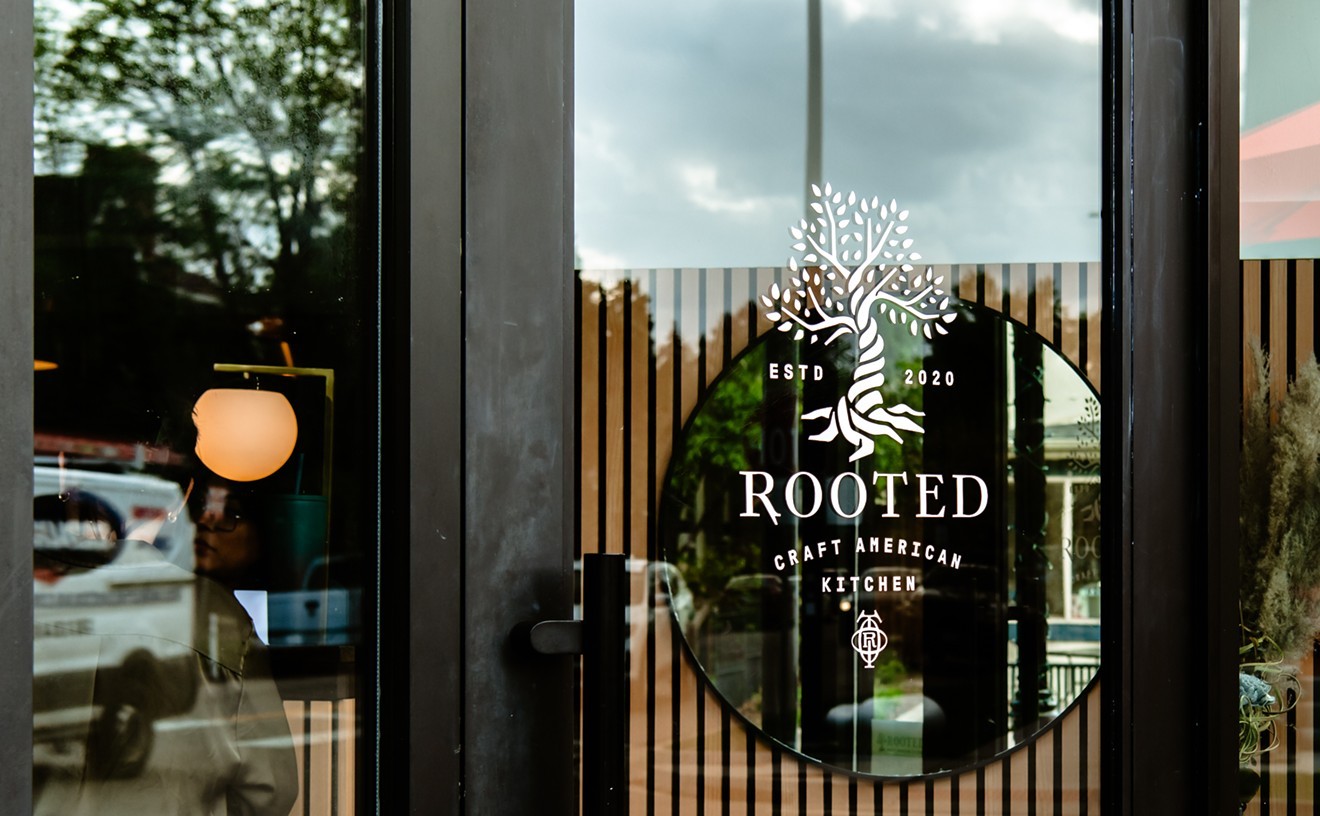Ethiopian cooking relies on spice blends, each mixed according to time-honored family recipes, like berbere and mitmita. Generous doses of seasoned clarified butter -- niter kibbeh -- add richness and depth to meats and vegetables alike. Each kitchen presents variations on themes of slow-cooked or quickly sautéed beef, lamb or chicken, with a fixed catalog of spices that present differing flavor profiles depending on the cooking technique. Subtle differences -- an extra grind of cardamom pods here, higher heat on the onions there -- mean big differences on each platter when compounded by many ingredients over hours of cooking. The version of awaze served at Axum, for example, may be as different from the dish at Eatopia (which I visited last week) as New Mexico's chile verde is from Colorado's.
See also: Doubling down on mitmita and berbere at Eatopia Ethiopian Cafe
We're fortunate in Denver to have what amounts to an Ethiopian restaurant district, if for no better reason than in case plans go awry (never mind the chance to compare variations on a theme). Amy and I had intended to meet a friend for dinner at Red Sea, but the place was unexpectedly closed, with not even a sign on the door to indicate a change of its regular business hours. Finding an alternative, though, was only a matter of craning my neck down Colfax to see the glowing sign of Axum just a couple of blocks west. And so, almost by default, we wandered into the spacious Ethiopian bar and restaurant and found seats and drinks before it occurred to us that in most other towns we'd be settling for burgers or pizza instead of opening a multi-page menu full of options beyond what even the first restaurant promised.Axum seems newish -- or at least newly remodeled -- with a modern bar, fresh paint in earthy shades of the red, yellow and green bands of the Ethiopian flag, and a small dance floor crowned with a disco ball and backed by a wall decorated in Amharic script, giving the affect of a classroom gussied up for a junior-high dance. New owners updated the decor about three years ago, according to our server, but the restaurant has been serving Ethiopian cuisine since at least the late 1990s.
There was no music or dancing on this visit, but Axum lists a 2 a.m. closing time, so perhaps things get lively later in the evenings or on weekends. At dinner hour on a weeknight, business trickled in just steadily enough to maintain a half-full dining room -- busy enough to keep the small staff on their toes without causing service delays.Axum's menu spans a few more pages than those of the other Ethiopian restaurants I've visited this month, offering breakfast items like a Sudanese-style fava bean stew called ful (regrettably spelled foul on the menu here); a few more appetizers (perhaps in deference to American dining preferences), including the lentil sambusas we ordered; and a number of beef dishes -- kitfo, gored gored and dullet -- that can be ordered raw or cooked. Kitfo, the tamest of the three, features minced and spiced beef, while the dullet also includes lamb tripe ("carefully cleaned," according to the menu) and liver. Gored gored makes use of cubed beef and the oil-based sauce called awaze rather than fiery mitmita.
The sambusas, stuffed and fried pastry triangles, aren't strictly Ethiopian in origin, but share roots with Indian samosas and other similar snacks that have spread as far as Southeast Asia and also into much of the rest of Africa. A spicy-sweet pan-Asian dipping sauce seemed a little incongruous but brightened the earthy lentil sambusa filling. We also nibbled on kategna, petite rolls of injera drizzled with butter and berbere, while waiting for the main course. Keep reading for more from the Ethiopian zone. Two of our entrees came as tradition dictates: mounded in separate piles on a sheet of spongy injera bread draped over a serving platter. The third, a stewed chicken dish called doro alicha, was presented in a ceramic bowl with a carved wooden ladle, which our server used to spoon the stew onto our injera -- a nice touch that kept the bread from becoming soggy too quickly under the thin sauce. Thin in texture only, though; the flavor was rich with butter, turmeric, garlic and onion, coating surprisingly juicy chunks of chicken breast. Our other two choices packed heat as well as an intricate blend of spices. The kwanta firfir, shredded injera doused with a a berbere-based sauce and studded with bites of reconstituted beef jerky (probably not of the Slim Jim variety), was like an Ethiopian version of chilaquiles, with the injera standing in for tortilla strips and the berbere upping the ante on Den-Mex red chile. And like chilaquiles, kwanta firfir is often served as a breakfast item in its homeland. The awaze tibs packed even more heat, thanks to the deep garnet sauce and cooked down jalapeños coating the tender cubes of lamb. Both dishes were so addictive that I continued to nibble on bits of surprisingly soft beef and lean lamb well past the point of fullness and well past the last sips of St. George beer and the funky, spontaneously fermented honey wine called tej.Generously seasoned, cooked with care and served with pride, the dishes of the three Ethiopian stops so far this June have varied more in preparation than in quality. I have one more trip to make and I have no doubt the quality of my next destination will not disappoint. There's too much at stake with all the competition around, from this stretch of East Colfax to the heart of Aurora, from the Santa Fe arts district and up to Boulder. It seems Denverites have caught on to what's great about the cuisine of this East African nation, and we're as proud of the variety available in this town as are the chefs and proprietors themselves.
For more from our tour of Denver's cultural, regional and international restaurant scene, check out our entire Ethniche archive.
Follow @CafeWestword











